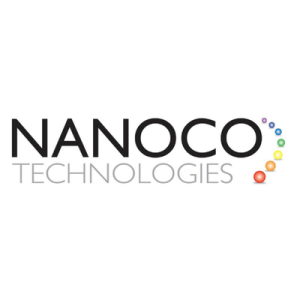Quantum dots are semiconductor nanoparticles that glow a particular color after being illuminated by light. The color they glow depends on the size of the nanoparticle. When the quantum dots are illuminated by UV light, some of the electrons receive enough energy to break free from the atoms.
This capability allows them to move around the nanoparticle, creating a conductance band in which electrons are free to move through a material and conduct electricity. When these electrons drop back into the outer orbit around the atom (the valence band), as illustrated in the following figure, they emit light. The color of that light depends on the energy difference between the conductance band and the valence band.
Nanoco Group PLC (LON:NANO) leads the world in the research, development and large-scale manufacture of heavy metal-free nanomaterials for use in displays, lighting, vertical farming, solar energy and bio-imaging.


